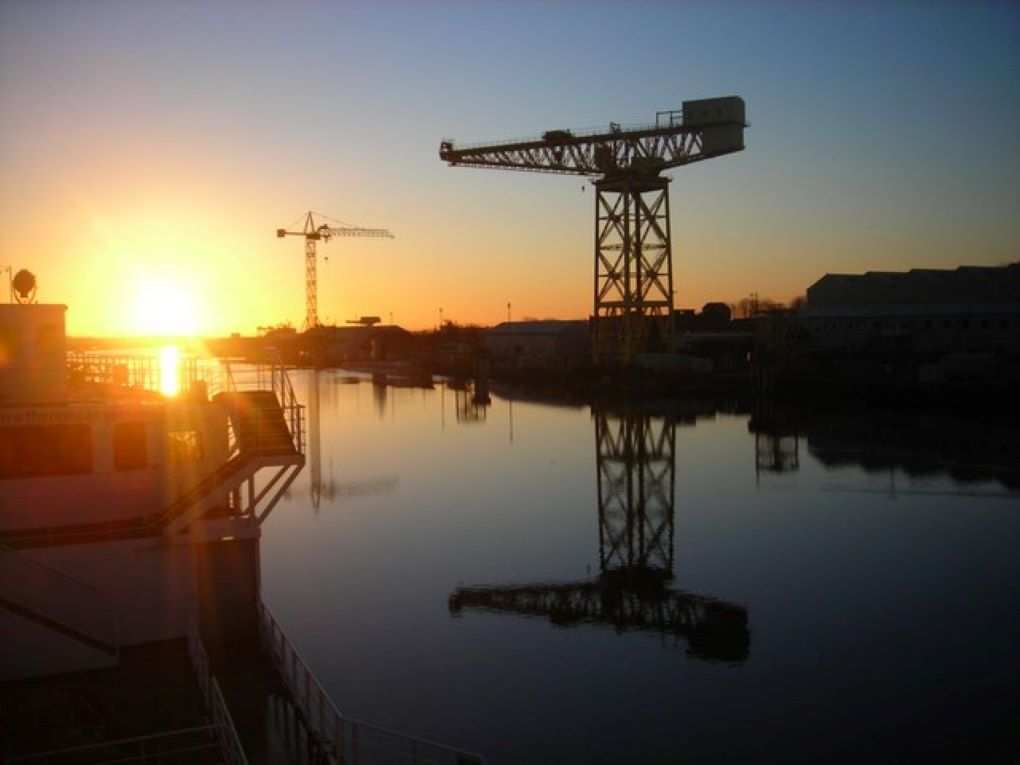Barrow’s cranes, like the yellow hammerhead crane, are gone. With a little imagination at least one of them could have been retained like the Titan Crane in Glasgow which is now a museum and a visitors’ centre.

It is too late for that. But we could still retain the memory of the Hammerhead and create something exciting on the Barrow waterfront.
One reason why Glasgow kept its cranes and we lost ours in Barrow is that Glasgow also lost its dockside industries. The water front became a public space on Clydeside. Barrow is still a working port owned by ABP with BAE Systems building submarines for the MoD. For both commercial and security reasons they need to carefully manage access to their dockside spaces.
Our other dockside spaces are another matter. We missed a trick when we let Morrisons build a supermarket on a prime site on the waterfront. But we can learn from others who have managed to combine commercial development with a celebration of heritage and tourism while having due regard to issues of national security.
Portsmouth is an important naval base which has attempted a judicious mix of preserving old buildings, turning its historic dockyards into interpretive museums, attracting modern retail and hospitality brands and creating public spaces with sculpture, attractions for children and entertainment venues at Gunwharf Quays. Of course it helps to have the Mary Rose and HMS Victory as your star attractions.
We can also learn from their mistakes. Portsmouth town centre feels run down and is marred by attempts at town planning that are arguably as destructive to the town’s heritage as the Luftwaffe in WWII. Portsmouth is essentially five things: a modern naval base, a centre for naval heritage, a university town, a tourist attraction and a place were locals still live and make a living. But these five elements do not seem well integrated. Like our own Scotch Buildings, each one stands alone, either sufficient unto itself or, in the case of the town at least, showing its insufficiencies.

They have also built a new and striking attraction, the Spinnaker Tower, complete with restaurant, glass floor, museum and public entertainment. It too has had a troubled history but is fast becoming a symbol for the town.
Barrow’s skyline is dominated by giant shipyard sheds that are utiIitarian and closed to the public. Is it too much to imagine a structure in Barrow, similar in scale to the Spinnaker, whose design pays tribute to the Hammerhead, with stunning views and opportunities for thrill seekers? Its girdered structure could house multi-storey botanic gardens that recognised the biodiversity of Barrow’s flora. Fauna might be catered for by safe and secure nesting sites for the peregrine falcons that once nested on the giant cranes. And below the surface, glass observation panels to show life in the waters of the dock.
It should stand back from the town centre so as not to overpower the church spires and the townhall clock. Perhaps over Cavendish Dock with regular harbour taxis from Morrisons quayside and a light railway or tramline linking it to the town.
